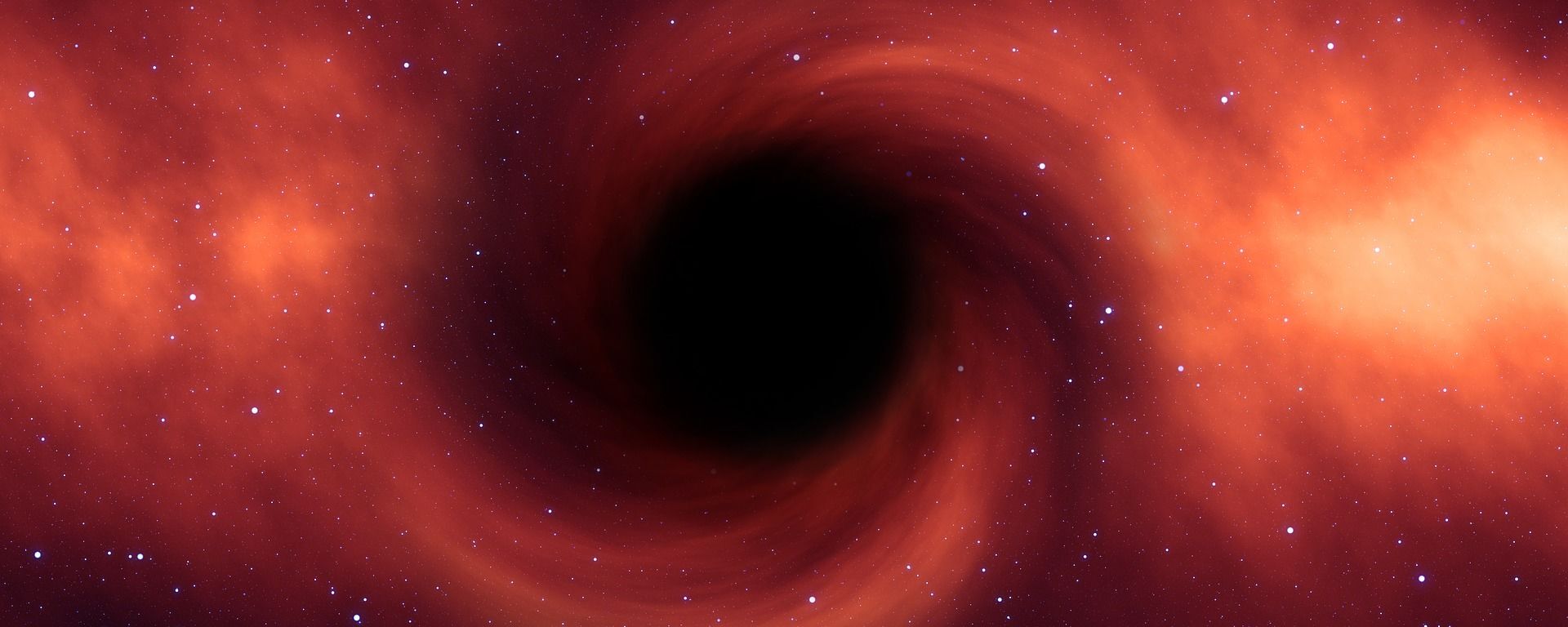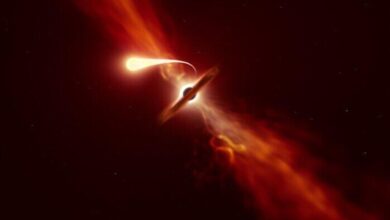Cosmic Cannibals: Universe-Old Mini Black Holes Might Be Devouring Stars
This artist’s illustration shows a planet (dark silhouette) passing in front of the red dwarf star AU Microscopii. The planet is so close to the eruptive star a ferocious blast of stellar wind and blistering ultraviolet radiation is heating the planet’s hydrogen atmosphere, causing it to escape into space. Four times Earth’s diameter, the planet is slowly evaporating its atmosphere, which stretches out linearly along its orbital path. This process may eventually leave behind a rocky core. The illustration is based on measurements made by the Hubble Space Telescope.
These elusive celestial phenomena, hypothesized by astrophysicists, might be the key to understanding early universe mysteries and black hole formation.New astrophysical research has brought forth a riveting theory: tiny black holes, possibly formed in the universe’s first second, might be hidden within stars, slowly devouring them. These primordial black holes, thought to be relics from the Big Bang, could be the culprits behind the mysterious behavior of some stars observed today.The research, led by astrophysicist Earl Bellinger at the Max Planck Institute for Astrophysics, suggests black holes, while traversing the galaxy at high speeds, could occasionally get trapped by stars. Although most would zip through like bullets, a few, especially slower ones, might end up embedded in stars.
The concept of "Hawking stars," stars powered by small black holes, was first suggested by theoretical physicist and cosmologist Stephen Hawking. These stars, including about 500 known so-called "red stragglers," could be hosting these primordial black holes.
By studying the pulsations and vibrations of these stars, astronomers hope to determine if they indeed contain black holes.
Detecting these black holes is challenging, yet it could offer profound insights into the early universe and black hole genesis.According to the study, these mini black holes could either be too small to impact their host stars or large enough to grow by consuming stellar material. The latter scenario could lead to “black hole cannibalism,” with the black hole feasting on the star from inside, causing changes in the star’s structure and energy output. Beyond PoliticsCosmic Powerhouses: Scientists Raise Possibility of Using Black Holes as Mega-Batteries14 December 2023, 22:18 GMTThis process might create what are known as “red stragglers,” cool red giants that differ from normal aging stars.The study was published in the Astrophysical Journal
Beyond PoliticsCosmic Powerhouses: Scientists Raise Possibility of Using Black Holes as Mega-Batteries14 December 2023, 22:18 GMTThis process might create what are known as “red stragglers,” cool red giants that differ from normal aging stars.The study was published in the Astrophysical Journal



